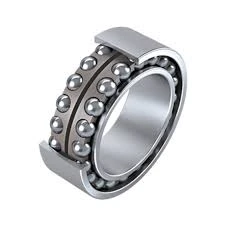
Nov . 29, 2024 14:35 Back to list
Understanding the Mechanics of Double Acting Thrust Bearings in Engineering Applications
Understanding Double Acting Thrust Bearings Functionality and Applications
Double acting thrust bearings are crucial components in various engineering applications, particularly where axial loads need to be supported in both directions. These bearings are designed to manage heavy loads while minimizing friction, thus ensuring efficient operation of machinery. In this article, we will discuss the functionality, design, and applications of double acting thrust bearings.
Functionality of Double Acting Thrust Bearings
Unlike single thrust bearings, which can only support axial loads in one direction, double acting thrust bearings can accommodate loads from both sides. This unique capability is made possible by their innovative design, which typically incorporates two sets of rolling elements or sliding surfaces. These elements work in unison to effectively distribute the load, enhancing the bearing's performance and longevity.
The primary function of double acting thrust bearings is to transfer axial loads while providing smooth rotation or movement of components. They achieve this through a combination of radial and axial support, which is essential in applications such as rotary machines, marine engines, and various industrial equipment. By minimizing friction between the moving parts, these bearings significantly reduce wear and tear, ensuring a prolonged service life.
Design and Types
The design of a double acting thrust bearing can vary based on the specific application and load requirements. However, the fundamental components usually consist of a cage, rolling elements (such as balls or rollers), and raceways that guide the rolling elements. There are two primary types of double acting thrust bearings ball type and roller type.
1. Ball Type Ball bearings are commonly used for medium-load applications. They feature a series of small balls that reduce friction and allow for smooth operation. The design is relatively simple, making it suitable for different applications.
double acting thrust bearing

2. Roller Type Roller thrust bearings, on the other hand, utilize cylindrical rollers that offer higher load capacity and better stability under heavy loads. These are ideal for industrial applications where high axial loads are prevalent.
The proper selection of materials is also critical in the design of double acting thrust bearings. Generally, they are made from high-grade steel or specialized materials that have superior wear resistance and strength. Lubrication plays a vital role in the operation of these bearings, as it mitigates friction and heat generation, enhancing performance.
Applications of Double Acting Thrust Bearings
Double acting thrust bearings find their applications in various fields, including automotive, aerospace, marine, and manufacturing industries. Some of the prominent applications include
- Cranes and Lifting Equipment In cranes, these bearings support the axial loads when lifting heavy materials, allowing smooth operation and stability. - Marine Propulsion Systems In ships, double acting thrust bearings facilitate the propulsion system, enduring the high axial loads generated by propellers. - Industrial Gearboxes Used in gear systems to manage the axial movement of gears, ensuring consistent performance and reducing wear.
- Aerospace Applications In aircraft engines, these bearings handle high-stress environments and contribute to the overall efficiency and safety of flight operations.
Conclusion
Double acting thrust bearings are an essential component in various mechanical systems, providing reliable support for axial loads in both directions. Their unique design allows for effective load distribution, reduced friction, and improved operational efficiency. As industries continue to evolve, the demand for advanced bearing solutions such as double acting thrust bearings will only increase, paving the way for innovations that enhance machinery performance and reliability. Understanding their functionality, design, and applications is critical for engineers and designers as they seek to optimize systems across multiple sectors.
Latest news
-
Premium Deep Groove Ball Bearings | High Speed & Reliability
NewsAug.29,2025
-
Durable Scaffolding Clamps - Secure & Reliable Tube Connectors
NewsAug.28,2025
-
Common Failures in Thrust Ball Bearings and Solutions
NewsAug.22,2025
-
How Tapered Roller Bearings Can Take Shock Loads
NewsAug.22,2025
-
Angular Bearings in High-Precision Spindles
NewsAug.22,2025
-
The Impact of Misalignment on Cylindrical Roller Bearing Performance
NewsAug.22,2025
